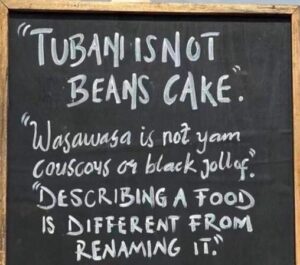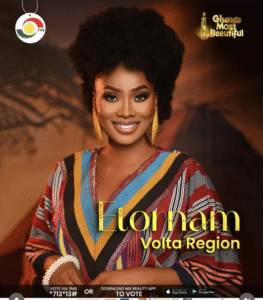
Waist beads. Image source: https://honors.fiu.edu/wp-content/uploads/2023/03/waistbeads.jpg
Waist beads have been a part of African culture for centuries, especially in West Africa. These colorful strands of beads, worn around the waist, are not just decorative. They carry deep meanings and serve various purposes. From symbolizing femininity and beauty to marking important life events, waist beads play an important role in the lives of many African women. This article explores why waist beads are worn and what they represent in today’s society.

Waist beads have a long history that traces back to ancient Egypt, as shown in this artwork. In Egypt, women often wore waist beads as part of their attire, which were made from various materials like stones, glass, and clay. These beads were not just decorative; they held special meanings related to the wearer’s status, wealth, and spirituality. In ancient Egypt, waist beads were symbols of femininity, fertility, and sensuality. They were often associated with rites of passage and were believed to have protective qualities. The beads were sometimes used to signify a woman’s maturity or marital status. Additionally, they were worn to celebrate the body and its beauty, emphasizing the curves and grace of the female form.

https://www.flickr.com/photos/shawnzam/4881945137
Although many ethnic groups in Ghana, such as the Akans, Ewes, and Northerners, are known for their use of waist beads and bead-making in general, the history of waist beads in Ghana is found in Kroboland. The Krobo people are renowned for producing waist beads on a large scale, making them central to this cultural tradition in the country. The Krobos’ prominence in waist bead production is believed to be linked to their shared migration history with the Yorubas, who are well-known for popularizing bead traditions across West Africa, particularly in Nigeria. This connection likely influenced the Krobo people as they migrated through Togo before finally settling in their present-day location in Ghana, where they have continued to preserve and develop this rich cultural practice.

Waist beads are not just decorative; they serve practical purposes as well. One of the key reasons women wear waist beads is to monitor weight changes. Unlike belts or clothing, which can stretch over time, waist beads remain fixed in size. When a woman gains weight, the beads will feel tighter and may sit higher on her waist, indicating a change in her body size. Conversely, if she loses weight, the beads will become looser and may fall lower on her hips. This natural method allows women to stay aware of their body changes without relying on scales or measurements as the beads serve as a gentle reminder to maintain a healthy lifestyle and can motivate women to stay mindful of their physical well-being.

Waist beads are often used to enhance a woman’s natural curves, particularly around the waist and hips. When worn regularly, they can help shape the body by gently molding the waistline and enhancing the hips and buttocks. The beads sit securely on the skin, encouraging a more defined waist over time. This shaping effect is one reason why many women choose to wear waist beads continuously. As a form of intimacy, waist beads worn by women can attract men. Additionally, it is commonly believed that during sex, waist beads can heighten the experience, as the sound they produce during movement can intensify the moment and increase desire.

Waist beads are also a symbol of feminism, as they are traditionally worn by women of all ages. This practice sets women apart from men and highlights their unique identity and roles within their culture. In the Akan and Krobo cultures, waist beads are seen as a symbol of maturity and womanhood. They are traditionally worn to mark significant life stages and transitions. Often, mini bells are incorporated into the beads, which ring to signal to potential suitors that the wearer is ready for marriage. This use of bells serves not only as a form of cultural expression but also as a way to attract and inform prospective partners of one’s readiness for serious commitment.
Waist beads are far more than just decorative accessories; they are rich with cultural, symbolic, and personal significance. Across various cultures, including the Akan and Krobo, waist beads represent maturity, identity, and readiness for important life stages, such as marriage. Whether serving as a symbol of femininity, an intimate allure, or a traditional marker of transition, waist beads continue to play a meaningful role in the lives of African women.
Editor: Ama Gyesiwaa Quansah.





